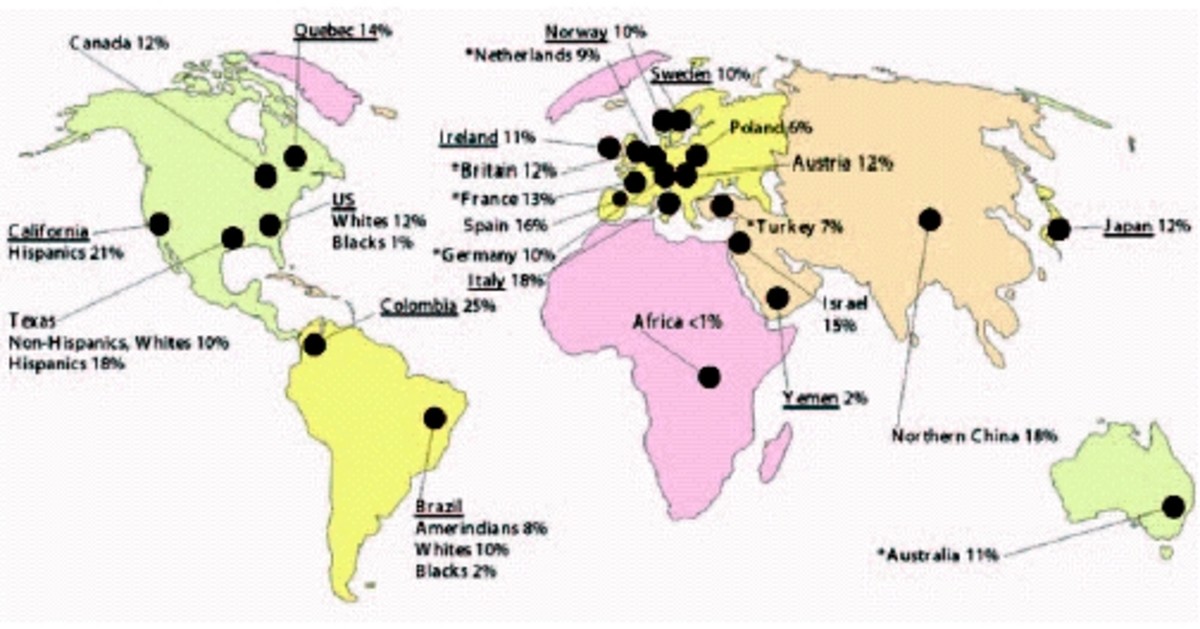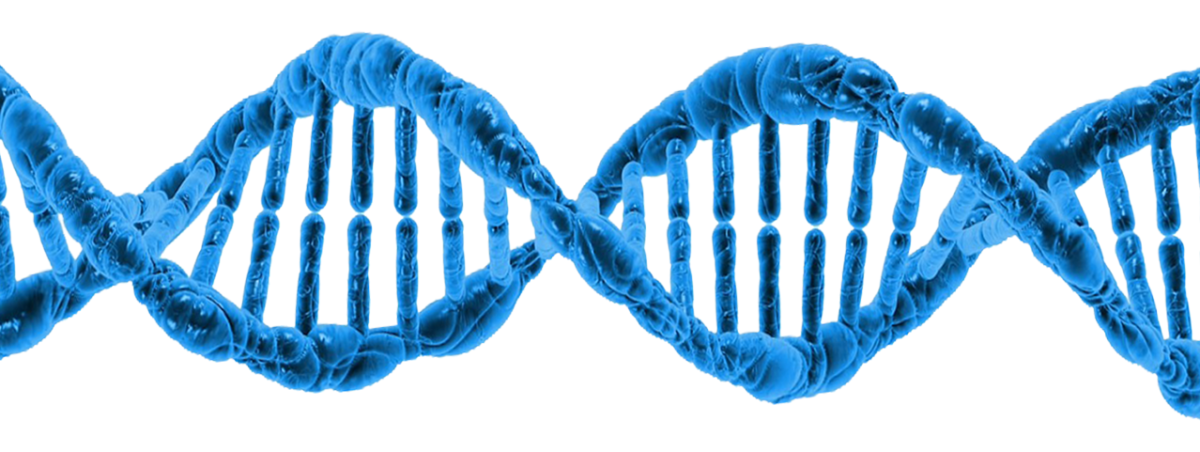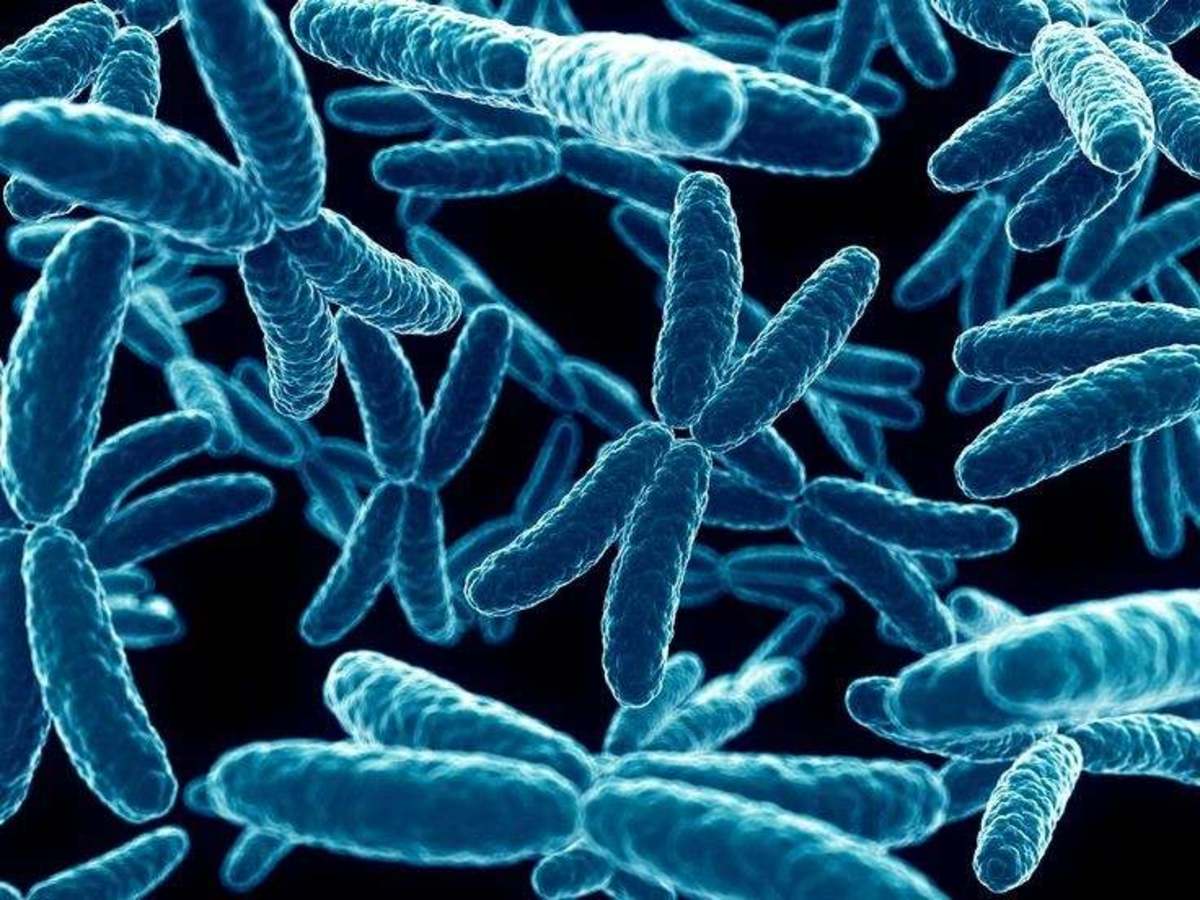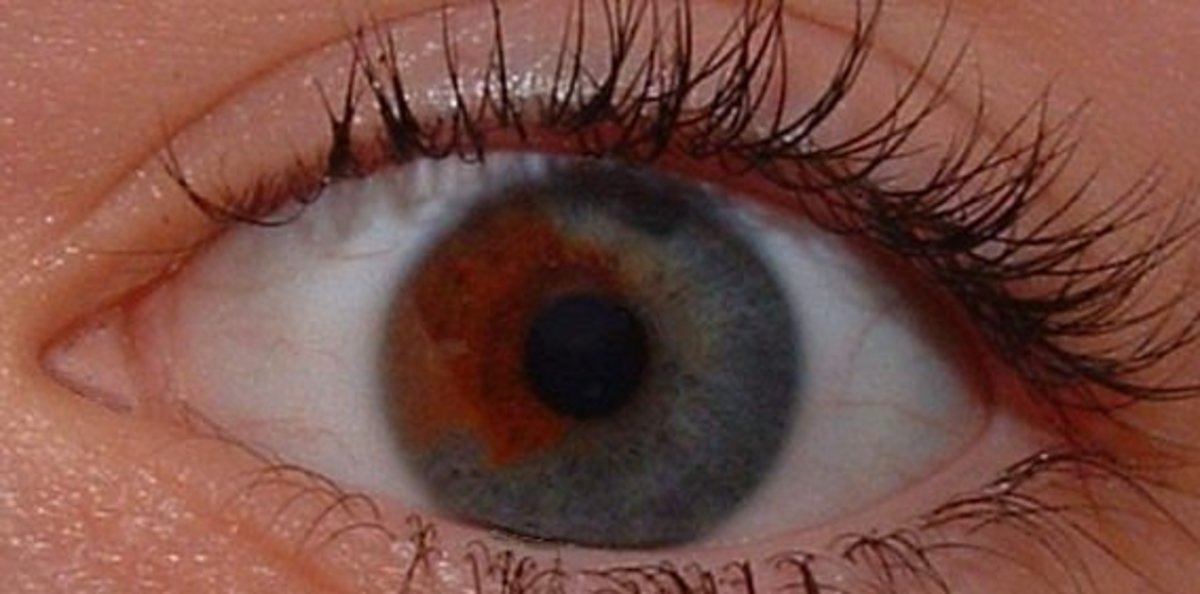What Are Genes? Nature Vs. Nurture.
It is a common belief that genes are the superior cause of development in biology with all non-genetic factors playing a secondary role. It is ideas such as this which can motivate notions of genetic causation in which all features of every human can be traced back to the root cause found in a person’s DNA. However, the more extreme versions of this idea in which the environment was of no great significance has all but disappeared from academic thinking of how development takes place. In general, the idea of genes as the superior cause of development means that many people discount or under appreciate the influence that non-genetic factors have on development. Phenotypes in particular are viewed as wholly biological yet there is some evidence to suggest that some phenotypic traits are in notable ways the result of causal effects of non-genetic factors. The notions of causality accept the contribution of non-genetic causation as well. This acceptance of other significant causal factors though has only lead to questions of how much we are influenced by our genes and how much we are influenced by our environment. This leads to quantitative analysis that claims such things as we are 30% a results of our environment and 70% a result of our genes. This is studied currently in place of pure genetic causation. Each case is often taken individually so, for example, the degree of influence of genetics over environment is sought in the case of sexual orientation and considered separately in the case of addiction. How we are able to determine which cause was most significant is difficult to see. There are in theory scientific tests to determine the division yet it seems that it is a little arbitrary when we can never be entirely sure the significance of each cause which contributes to the outcome. There is significance in understanding these statistics as values such as these are used in a vast array of academic research beyond biology such as anthropology, sociology, and politics. Thus, the understandings of genes and causal factors of development have real world implications.
This paper steps through some of the various arguments initiated by an explanation of genes and including the base theory that genes are the 'privileged cause' (all other factors being subordinate). Genes are considered privileged only in that they contribute more of a variety or start the causal chain more so than other factors. Non-genetic factors can often be considered as only able to stop or alter the course of development once it has been started and put into actuality by genes, these other, non-genetic factors only have potentiality. Following from the discussion of these notions is the idea of the parity thesis. This thesis attempts to understand the causal influences in development as on a par in some sense through the notions of Interactionism and causal indistinctness. These features of parity lead to versions of the developmental systems theory which is further discussed in the paper. Millean parity and no-dichotomies views of the developmental systems theory are the result of interactionism and causal indistinctness. Millean parity is motivated by the notion of causal indistinctness and the rejection of interactionism while the no-dichotomies views follows from the acceptance of interactionism and the rejection of causal indistinctness. The discussion of the developmental systems theory will be divided into causation, inheritance, and information carriers; each addressing a separate issue in response to genes as the privileged cause. There will then be a brief look at some criticisms of developmental systems theory and problems with the understanding of development as a whole. The conclusion will then attempt to support what the developmental systems theory is attempting to do in questioning why it is the genes are the privileged cause and in placing greater significant value on those non-genetic factors of causation. However, it does seem that, despite the admirable attempts of the developmental systems theory, it is still clear that much needs to be done, primarily in the defining of what it is to cause and what it is to be a gene.
What Are Genes?
In order to understand the issues that the developmental systems theory is attempting to address it is first important to understand where these have derived from. Understanding the concept of the gene and how it has come to the confused definition it has today is central to this endeavour. The first lasting concept of the gene derives from Nobel Prize winner Thomas H. Morgan's work studying fruit flies from which he and his colleagues confirmed the chromosomal theory of inheritance which claims that genes are located on chromosomes like beads on a string and that some genes are linked. The classical idea of genetics was that genes were the cause of all phenotypic traits in organisms and that any given phenotype is the result of the contribution of any genes. Morgan's work also looked at the mutations of fruit flies and the resulting understanding was that genes cause change in the original phenotype when there is a mutation (new allele). Even at the time though Morgan was aware of the issue of the definition of genes:
“There is not a consensus of opinion among geneticists as to what genes are – whether they are real or purely fictitious – because at the level at which genetic experiments lie, it does not make the slightest difference whether the gene is a hypothetical unit, or whether that gene is a material particle” (1933, quoted in Falk 1986, 148).
The theory of genetic (hereditary) inheritance “functioned as an investigative tool with which geneticists could explore broader biological questions” (Griffiths 2006; 504). The aim was not to prove the existence of genes but rather to use the assumption that genes exist in order to answer other biological questions (Griffiths 2006; 504). This concept lasted around half a century before being overtaken when the genetic code was found in the 1960's. This discovery led to the creation of the classical molecular gene concept (Griffiths, 2006; 504). This concept claimed that genes were located on chromosomes and were made up of DNA rather than protein as was previously believed. It was also thought that genes had an equal 1:1 ratio with proteins and that gene were in fact continuous segments of DNA. With time though, this concept of the gene was elevated to be the concept most readily used in modern science in the understanding of genes.
The prevailing understanding today is drawn from the contemporary molecular gene concept although it is not as clear cut and rigidly defined as previous understandings. Genes as defined by this concept can be understood to be
“things an organism can be with its genome...The same DNA sequence potentially leads to a large number of different gene products and the need for a rare product calls for the assembly of novel mRNA sequences. Hence the information for a product is not simply encoded in the DNA sequence but had to be read into that sequence by mechanisms that go beyond the sequence itself.” (Griffiths, 2006; 517).
Thus, more than just the DNA sequence is of consequential importance when looking at the development of an organism and its phenotypes. Mechanisms beyond the DNA determine in some ways how the DNA is to be read. At different stages of an organisms life, for example, the genes can be read differently and thus had a different effect on the organism. The gene itself does not entirely determine its effects. It had also been previously understood that only one strand of DNA is transcribed but recently it has been found that DNA can in fact “be read both forwards and backwards by the cellular machinery. This feature allowing it to produce either different or matching (complementary) products” (Griffiths 2006; 518). It is possible for very different products to be read from the same DNA sequence by a process called 'frameshifting' in which the reading begins at a different nucleotide. It is clear from this also that it is more than just the genes and DNA which determine how the process of development is to occur, a range of mechanisms are at play and act to specify the sequence of the final product. RNA editing is a further feature which can disturb the correspondence between the coding sequence and the gene product and there is also the possibility of non-standard translation of mRNA.
“The relationship between DNA and gene product is indirect and mediated to an extent that was never anticipated when the basic mechanisms of transcription and translation were clarified in the 1960s....focusing on the cutting-edge of contemporary genomics can induce an extremely deflationary view of the gene.” (Griffiths 2006; 520-521)
It seems that the definition of a gene is itself contestable as the definition has tended to include the idea of a blueprint for development. It seems that this is a now contestable idea to some extent.
“Investigation of the manner in which a wider range of genomes generate a wider range of gene products has revealed that the functional role of genes can be filled by diverse, highly flexible mechanisms at the level of the DNA itself.” (Griffiths 2006; 521)
The deeper understanding of the genetic material has left us with a rather uncertain and generalised concept of the gene. One which is convenient when attempting to attribute a cause of something yet this type of definition does not seem adequate. Surely if the genetic concept is to be used so freely it becomes valueless to even attempt to explain causation beyond it.
“the gene has become a flexible entity with borders that are defined by a combination of spatial organisation and location, the ability to respond specifically to a particular set of cellular signals, and the relationship between expression pattern and the final phenotypic effect” (Dillon 2003, 457).
It seems clear that there is a great need to understand the causal network involved in the developmental process if the genes are to understood better. The developmental systems theory is one attempt to understand and explain this.
Parity Thesis
It is now well understood that genes do not and cannot work alone or independently in the causal development of an organism. One of the ideas to flourish from the growing understanding of the non-genetic contribution to development is parity thesis. In its essence parity thesis is the idea that both genetic and non-genetic factors in development are equal in some sense. There can be many readings of this but its essence remains stable.
There can be understood to be three types of parity thesis:
1. genes and some environmental causes are on a par in development. This view would claim that there are a limited number of non-genetic factors that contribute equally to development as genes do, yet these factors do exist.
2. All elements of the developmental matrix are equally causally privileged. This understanding of parity would argue that all factors that act as difference makers in development are of equal importance and thus on a par along with genes. This is perhaps the most extreme of the parity understandings. Yet, when considering that it is impossible for genes to work alone and that these difference makers do have a notable causal influence,
who are we to determine that influence as less significant for the final output?
3. Each and every element of the developmental system must be approached as if it might be important in development and we can take things from there. In this understanding everything is a candidate for importance yet not automatically considered important when it is merely one of the many difference makers, as many things are. This conception allows for more causal import for non-genetic factors without making the bold claim of the above understanding that all difference makers matter equally.
So the range of types of parity varies from some specific environmental causes being on a par with genes to every element of development being considered as crucial as genes for the development of an organism.
Conclusion
It seems as though some of the conceptions of what makes a gene a privileged cause have been rejected in recent history yet, some remain common. It’s unclear whether this is justifiable. The notion of non-genetic causal factors though has become more important to understanding of development. This has led to the parity thesis and the increase in attempts to understand the relation of genes with non-genes in their causal relations of development on an organism’s outcome and phenotypic traits. The developmental systems theory is one of the prominent understandings which have been founded from this development in the concept of causation. It attempts to find ways in which to conceive of genes and non-genetic factors on equal terms. It may not be wholly successful but it does give good cause to reconsider the commonly held notions of genetic causation. For each way that genes seem to be superior, developmental systems theory offers a way in which it is possible to conceive of non-genetic factors similarly, in terms of causation, in heritance, and information in particular. There are problems with the ideas of developmental systems theory. So much so that adopting it as a theory would not be something considered highly recommendable. However, in terms of the input it offers, it does seem to be valuable in its enlightening of the possibilities. If nothing else, it points out the problems with the conceptions of genes and causation that are prominent at the moment.
If any progress is to be made then clearer definitions are required before anything else. The concept of the gene itself is unclear and when this is unclear it is hard to define the environment around it. The privileged status of the gene, if it is to be maintained in any way, must begin with a clearer understanding of what a gene is required to be. Inheritance is a further unstable term which would benefit from a clearer definitive understanding. If genes are privileged in the sense of inheritance then both these terms need framing. The developmental matrix clearly requires both genes and non-genetic influences in order to function and produce any traits. This does not mean the gene cannot be privileged in some sense though but in what sense needs to be established is it is to be considered as such. Until then, the work of developmental systems theorists is of great value in providing a framework which supports all causes and their significance. When this clarity is attained then the various arguments need to be explored again within that framework and further work done in areas highlighted as lacking clarity or definitive information.








